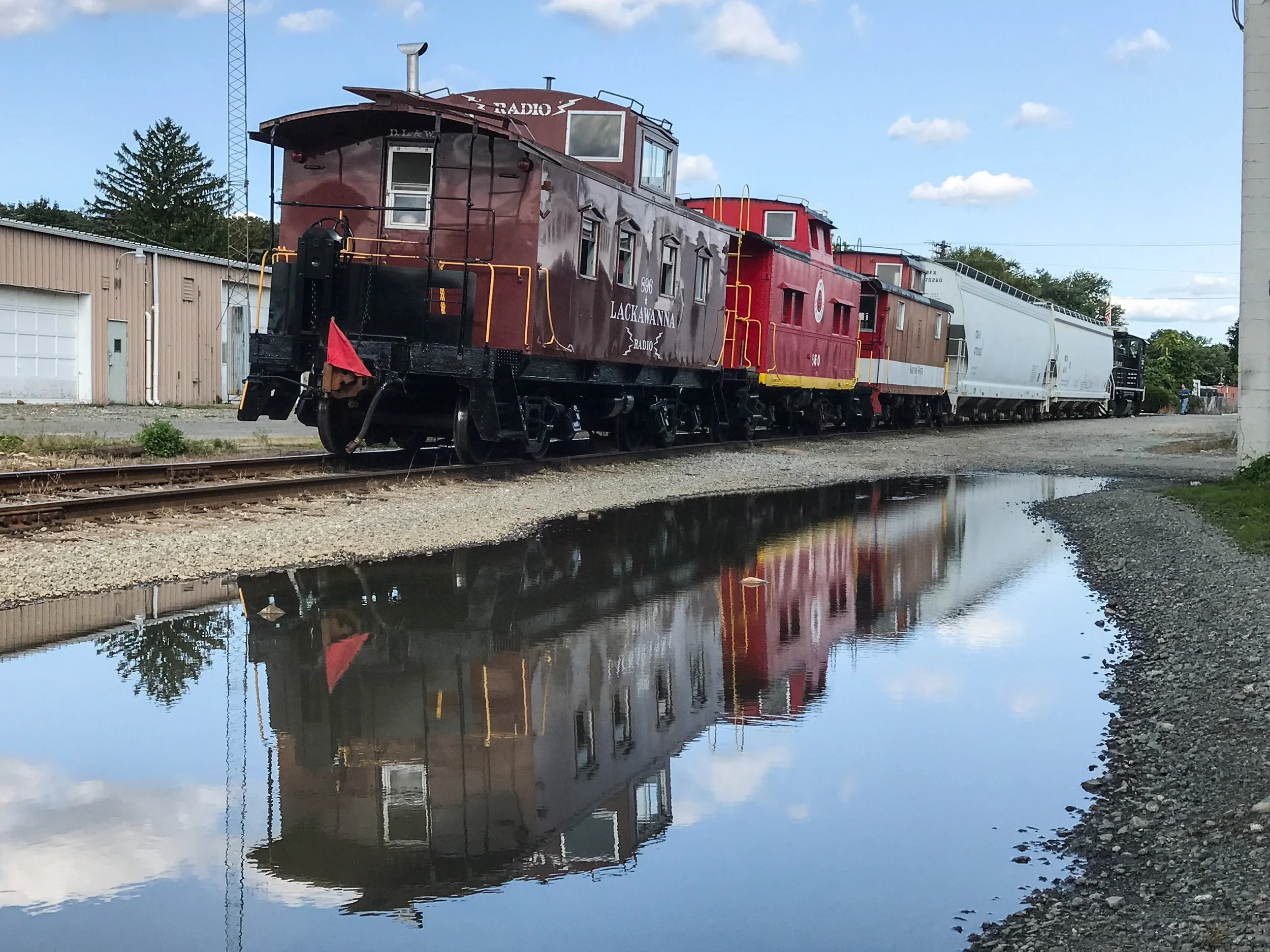The first of Tri-State's three operating cabooses to be refurbished, DL&W 896, has fared well since it was fully-restored more than 20 years ago. Its high-quality DuPont Centauri paint job was applied by a professional automotive painter and has stood up well to the weather. That, coupled with its fully-restored interior, working oil lamps and coal stove, and like-new replica upholstery, has made it the crown jewel of Tri-State's collection for the past two decades.
However, as for anything stored outside, nature takes its toll. Before 896 hit the road in September, it was time for some improvements. 896's windows, roof, trucks, and under-frame were starting to show their age, which is to be expected after years of hauling passengers. All of that was addressed this summer.
Tri-State ordered new glass to replace the faded Lexan plastic that came with the window frames when the caboose first restored. Lloyd Leone, Jeff Jargosch, and Richie King took on swapping out and sealing all the new glazing, purchased locally from Snow's Glass in Dover. It was no simple task. Hours of tedious work were needed to remove the cupola windows and replace the glass once the frames were on the ground. The new "real" glass now stands no chance of fading and is far easier to clean... and you can see out of them.
The radio antenna on the roof had also fallen victim to age. Erik Stenzel re-fabricated a new post for the antenna and welded it back to the roof. It may be a small detail, but when the caboose was built with "RADIO" emblazoned on its sides and cupola, it is an important one.
Kevin Phalon, with some help and equipment from member John Nolan, repainted all of the black on the caboose: trucks, stairs, and under-frame (which was formerly a steam locomotive tender frame).
All of that work, along with a wax job of the whole car body, resulted in 896 looking almost as good as it did 20 years ago. This is all part of Tri-State's commitment to not just high standards of restoration, but high standards of maintenance for the duration of our equipment's life in preservation.













